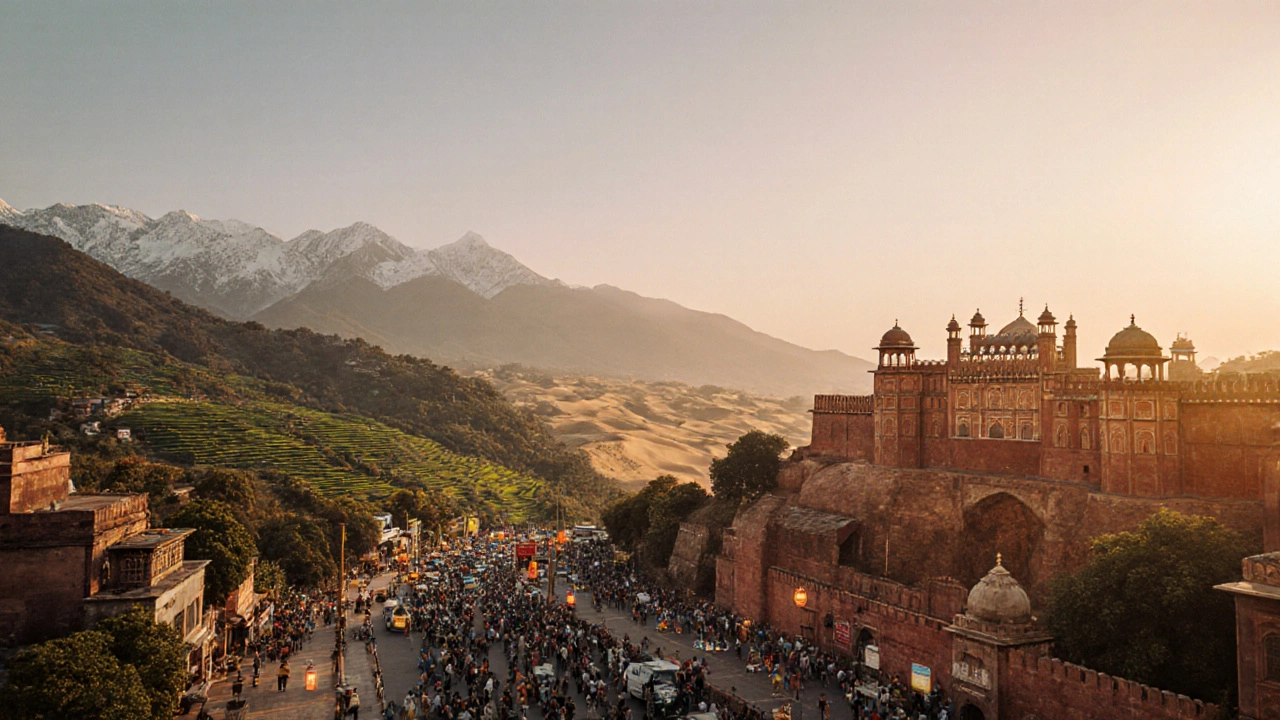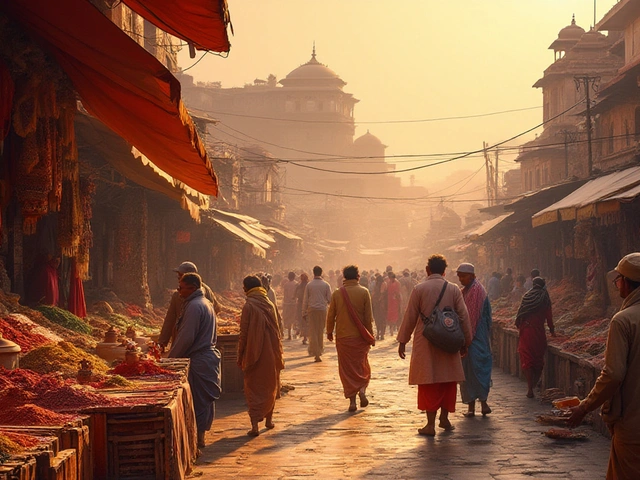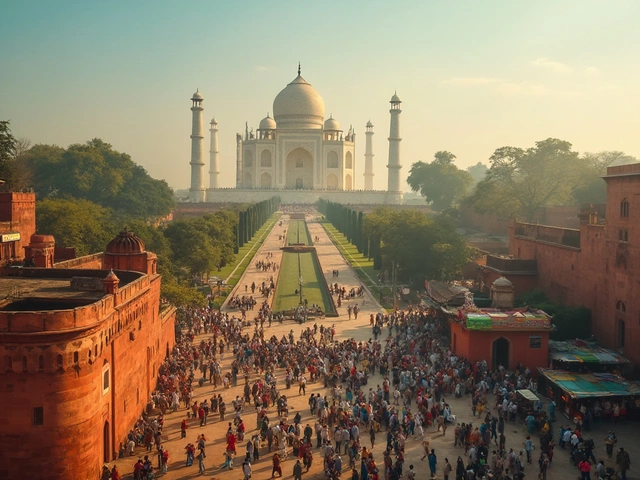Northern India Travel Planner
Find Your Perfect Travel Time
Select your interests and preferred climate to determine the best months for your Northern India trip.
Your Recommended Travel Time
After considering your interests and climate preferences, the best time to visit Northern India is:
Loading results...
Why this time is perfect: This period offers comfortable weather, major cultural celebrations, and ideal conditions for your selected activities.
Planning a trip to northern India and wondering when the weather, scenery, and celebrations line up just right? You’re not alone-travelers constantly ask which window of time offers the perfect blend of comfort and culture. Below, we break down climate patterns, highlight regional festivals, and point out the sweet spot that most visitors swear by.
Key Takeaways
- October to early November delivers pleasant temperatures, clear skies, and vibrant festivals across Delhi, Rajasthan, Himachal, and Uttarakhand.
- Winter (December‑February) is ideal for hill stations but can be chilly in the plains.
- Summer (April‑June) brings heat, but high‑altitude destinations stay comfortable.
- Monsoon (July‑September) offers lush landscapes but frequent showers that may disrupt travel plans.
- Tailor your itinerary to the activities you love-culture, trekking, wildlife, or winter sports.
Northern India is a geographic region that includes the states of Delhi, Uttar Pradesh, Rajasthan, Himachal Pradesh, Uttarakhand, and parts of Punjab and Haryana. It’s known for its diverse climate, historic monuments, and a calendar packed with colorful festivals. Because the climate shifts dramatically from the plains to the mountains, the “best month” really depends on where you’re headed and what you want to experience.
How Climate Shapes the Travel Calendar
Understanding the four major weather phases-summer, monsoon, post‑monsoon (autumn), and winter-helps you match your travel goals with the right month.
Summer (April‑June)
In the plains, temperatures often climb above 40°C (104°F). However, the hill stations of Himachal and Uttarakhand stay cool, hovering between 15‑25°C (59‑77°F). This makes the mountains a refuge for trekkers seeking moderate weather.
- Himachal Pradesh offers alpine valleys, snow‑capped peaks, and the famous Kullu‑Manali corridor with pleasant daytime highs.
- Uttarakhand boasts the Nainital‑Almora region, perfect for lake‑side relaxation.
Monsoon (July‑September)
Clouds dominate the sky, and rainfall ranges from 150mm in the northwest to over 300mm in the sub‑Himalayan zones. The landscape turns a deep green, great for photography, but road travel can be tricky.
- The Golden Triangle (Delhi‑Agra‑Jaipur) stays accessible, though occasional showers may affect outdoor sightseeing.
- In Rajasthan, the monsoon revives desert flora, creating spectacular sunrise views over sand dunes.
Post‑Monsoon / Autumn (October‑early November)
This period is the sweet spot for most travelers. Temperatures drop to a comfortable 20‑30°C (68‑86°F) in the plains and stay mild in the hills. Skies clear, giving crystal‑clear views of monuments and mountain ranges.
- Major festivals-such as Diwali (the Festival of Lights) and Durga Puja in Delhi-ignite the cultural scene.
- Wildlife enthusiasts can spot migratory birds in the Ranthambore National Park before the winter chill sets in.
Winter (December‑February)
Plains become cool (5‑20°C / 41‑68°F), while hill stations plunge below freezing at night, opening up snow‑covered trekking routes and ski resorts.
- In Manali, winter sports like skiing and snowboarding draw adventure seekers.
- Delhi’s Delhi International Arts Festival brings performances and workshops to the city’s cultural venues.
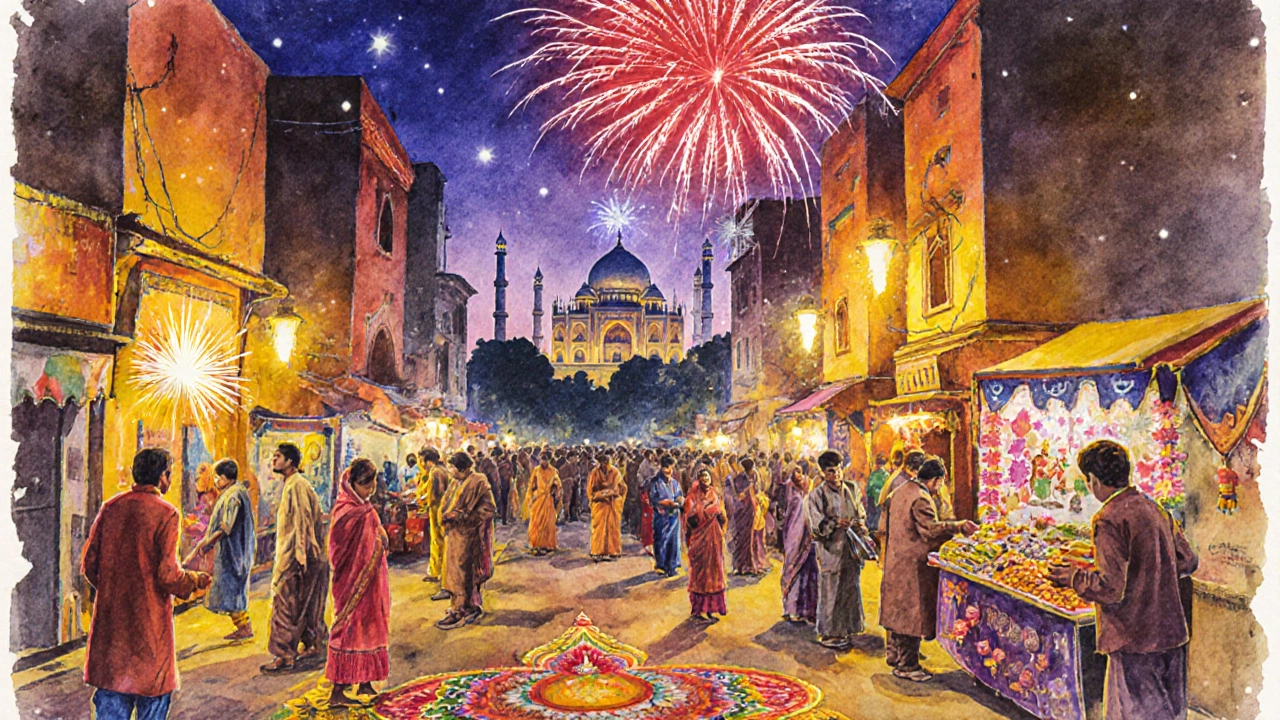
Why October‑Early November Wins the Vote
If you had to pick a single month that balances weather, festival buzz, and travel logistics, best month to visit northern India is definitely October. Here’s why:
- Temperatures are moderate across the entire region, eliminating the need to pack for extreme heat or cold.
- Rainfall drops dramatically after the monsoon, giving you uninterrupted sightseeing days.
- Major festivals light up streets, markets, and temples, offering authentic cultural immersion.
- Wildlife parks are at peak visibility, with animals more active in cooler weather.
- Travel infrastructure-roads, trains, and flights-operates at full capacity, so you won’t face monsoon‑related cancellations.
Month‑by‑Month Snapshot
| Month | Avg Temp (°C) | Rainfall (mm) | Key Festivals | Best Regions |
|---|---|---|---|---|
| October | 20‑30 | 20‑50 | Navratri, Dussehra, Diwali (late) | All - especially Rajasthan & Delhi |
| November | 15‑28 | 5‑20 | Guru Nanak Jayanti, Pushkar Fair | Golden Triangle, Himachal |
| December | 8‑22 | 0‑5 | Christmas, Delhi International Arts Festival | Uttarakhand hills, Delhi |
| January | 5‑18 | 0‑2 | Republic Day Parade, Kumbh Mela (Uttar Pradesh) | Hill stations, Rajasthan (cool evenings) |
| February | 10‑20 | 0‑3 | Vasant Panchami, Holi (late March) | Himachal trekking, Delhi museums |
Planning Your Itinerary by Interest
Once you’ve settled on the month, shape your route around what you love most.
Cultural Immersion
Start in Delhi, where the historic Old City meets modern art galleries. Time your visit for Diwali night-watch the city glow with lamps, fireworks, and street food.
From Delhi, take the rail link to the Golden Triangle. Jaipur’s forts and markets bustle with tourists during Navratri, while Agra’s Taj Mahal appears even more majestic with crisp autumn skies.
Hill‑Station Adventures
If mountain trekking is on your list, head north after the plains. In October, Manali offers clear views of the Pir Panjal range, and the Parvati Valley trail is dry and safe.
For a quieter vibe, consider Rishikesh-the yoga capital-where you can combine riverside meditation with gentle hikes to the nearby waterfalls.
Wildlife & Nature
Ranthambore, Corbett, and Jim Corbett National Parks open fully in October‑December. Cooler temperatures mean animals congregate around waterholes, giving you better chances for sightings.
Birdwatchers should target Keoladeo National Park in Bharatpur during November-over 300 species pass through during migration.
Foodie Trail
Seasonal dishes shine in post‑monsoon months. In Rajasthan, try the traditional gatte ki sabzi cooked with fresh, local produce. In Himachal, the warm fried siddu becomes a street snack favorite during the harvest festivals.
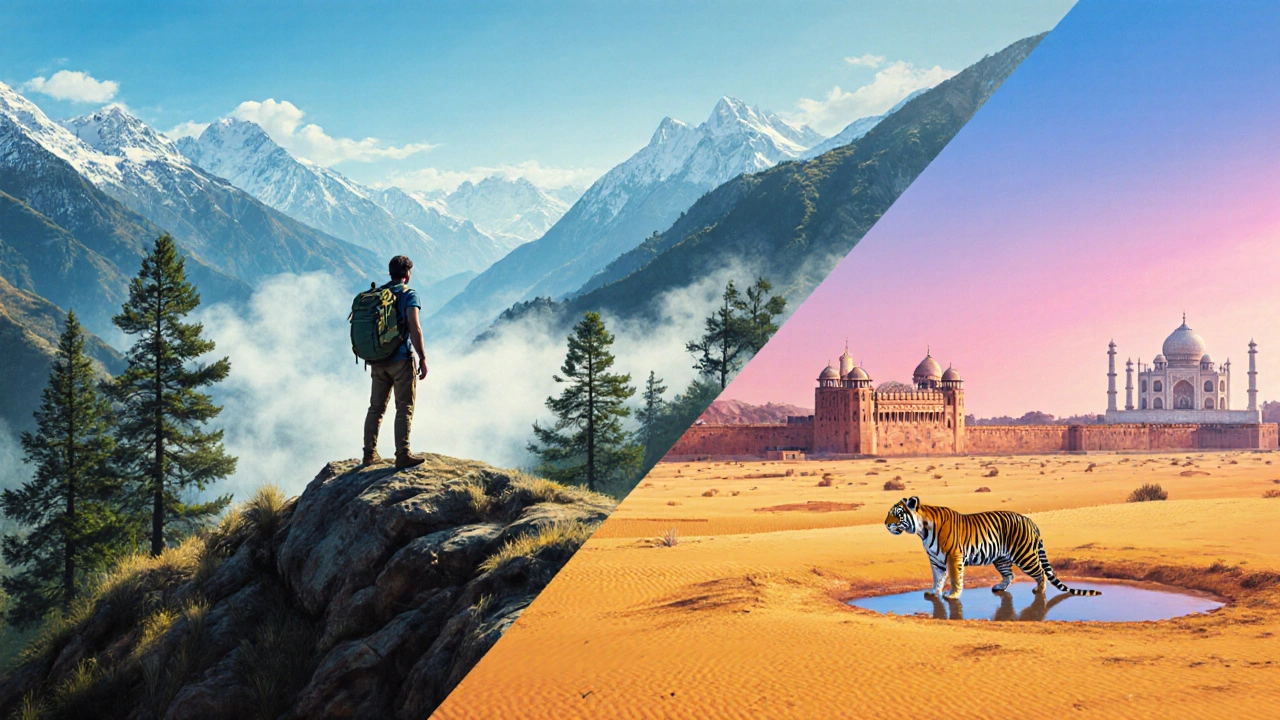
Practical Tips for an October‑November Trip
- Pack layers: Mornings can be cool, afternoons warm-think a light sweater and a breathable shirt.
- Book accommodations early: Festivals draw crowds, and boutique hotels in Jaipur and Delhi fill up quickly.
- Carry a small umbrella: Occasional showers linger in early October, especially in the foothills.
- Use rail passes: The Indian Railways network connects the key cities efficiently; a month‑long pass saves money.
- Stay hydrated: Even moderate temperatures can dehydrate you when walking historic sites.
FAQs
When is the weather most comfortable across all of northern India?
October through early November offers mild daytime temperatures (20‑30°C) and low rainfall, making it the most comfortable period for both the plains and the hills.
What major festivals should I schedule around in October?
Key celebrations include Navratri, Dussehra, and the early night of Diwali (which often falls in late October). These festivals light up streets with processions, markets, and traditional performances.
Is October a good time for wildlife spotting?
Yes. Parks like Ranthambore, Jim Corbett, and Keoladeo are fully operational, and cooler weather draws animals to water sources, improving sight‑ing chances.
Should I avoid the Himalayas during October?
Not at all. The Himalayan foothills in Himachal and Uttarakhand are clear and dry, perfect for trekking. Higher passes may start receiving snow after late November, so plan treks before then.
How do I manage crowds during festival seasons?
Book hotels and train tickets at least a month in advance. Arrive at major festival sites early in the morning to avoid peak crowds and consider staying in nearby smaller towns for a quieter experience.
Next Steps
Now that you know why October‑early November tops the list, start sketching your route. Pick a mix of city highlights (Delhi, Jaipur, Agra), a hill‑station stop (Manali or Shimla), and a wildlife reserve (Ranthambore or Jim Corbett). Book transport and accommodation early, pack layers, and get ready for a trip where culture, climate, and scenery click perfectly.
